GEOGRAPHICAL INDICATION TAG
1. Context
2. About Geographical Indication (GI) Tag
- A Geographical Indication (GI) is a label that is applied to products that have a specific geographical origin and that have characteristics related to that particular location.
- For Example, a GI tag for Amroha Dholak indicates that the dholaks must be made in Amroha, Uttar Pradesh, using traditional methods and materials.
3. Importance of GI Tag
- GI tags are important because they help to produce the reputation and authenticity of products from a particular region.
- They also help to promote fair trade and sustainable practices. In the case of the seven products from Uttar Pradesh that have received GI tags, these tags will help to ensure that these products are made using traditional methods and that they are of high quality.
- This will benefit the artisans who make these products and it will also help to preserve the unique cultural heritage of Uttar Pradesh.
4. Products from Uttar Pradesh Get GI Tag
4.1. Amroha Dholak
- It is a musical instrument crafted from natural wood, particularly mango, jackfruit and teakwood.
- Skilled artisans carve hollow blocks of various sizes and shapes from mango and sheesham trees, which are then fitted with animal skin, typically goatskin, to produce the instrument.
- It is produced by around 300 small units, employing over 1, 000 artisans. The Artisans Welfare Society in Mohalla Danishmandan, Amroha, Uttar Pradesh applied the GI Tag.
 Image source: One district-one product
Image source: One district-one product4.2. Baghpat Home Furnishings
- Exquisite Handloom Craft The Directorate of Handloom and Textile Industries, Government of Uttar Pradesh and the Master Weavers Cooperative Society Limited applied the Baghpat Home Furnishings.
- Baghpat and Meerut are renowned for their exclusive handloom home furnishing products and the tradition of weaving cotton yarn fabrics for generations.
- The handloom weaving process in Baghpat is known for utilizing only cotton yarn and the distinctive frame loom technique.
 Image source: One district-one product
Image source: One district-one product4.3. Barabanki Handloom Product
- A GI Tag for Traditional Weaving The Barabanki Handloom Product has also been honoured with a GI tag.
- The application for this product was filed by the Directorate of Handloom and Textile Industries, Government of Uttar Pradesh, along with Bhartiya Bunkar Sahkari Samiti Limited.
- The filing reveals that the Barabanki cluster comprises approximately 50, 000 weavers and 20, 000 looms in Barabanki and its adjoining areas.
- The annual turnover of this cluster is projected to be around ₹150 crores.
 Image source: One district-one product
Image source: One district-one product4.4. Kalpi Handmade Paper
- An Age-old Craft application for the Kalpi Handmade Paper was submitted by the Hasht Nirmit Kagaj Samiti in the Industrial Estate of Kalpi, Uttar Pradesh.
- Kalpi has a rich history of handmade paper manufacturing. Munnalal Khaddari a Gandhian formally introduced the craft in the 1940s, although some locals claim its roots go even further back.
- The Kalpi handmade paper-making cluster engages over 5, 000 craftsmen and operates approximately 200 units.
 Image Source: Magzter
Image Source: Magzter4.5. Mahoba Gaura Patthar Hastashlip
- Crafted from the Pyro Flight Stone Mahoba Gaura Pattar Hastashlip represents the stone craft of the region, specifically using the unique and delicate Pyro Flight Stone.
- This radiant white stone is predominantly found in Mahoba and is carved into various pieces to create stunning craft items.
 Image Source: Jagran
Image Source: Jagran4.6. Manipuri Tarkashi
- Intricate Brass Wire Inlay Work on Wood Mainpuri Tarkashi is a popular art form originating from Mainpuri, Uttar Pradesh.
- It involves intricate brass wire inlay work on wood. Traditionally, it was employed in the creation of Khadaous (wooden sandals) an essential household item when leather was considered unclean.

4.7. Sambhal Horn Craft
- Unique Handcrafted Art The Sambhal Horn Craft utilizes raw materials obtained from dead animals and showcases the skilful handiwork of artisans.
- This craft involves completely handmade creations and is recognized for its distinctiveness.

Image source: One district-one product
It is embroidered on an off-white coarse cloth with red, yellow and green coloured threads, with each colour holding significance. Green symbolises the mountains and hills, and yellow stands for peace and happiness. Red stands as the symbol of blood.
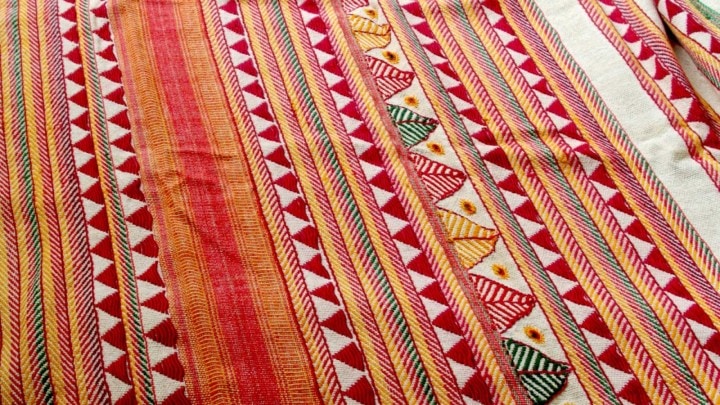
The art form belongs to the Lanjia Saura community, a PVTG largely residing in the Rayagada district. These paintings are in the form of exterior murals painted on the mud walls of homes. White paintings figure over a crimson-maroon background.
It is believed that the Lanjia Sauras paint their walls with Idital artworks to show gratitude to their deities and forefathers, and also for the well-being of their community. Reflecting the love and affection of the primitive tribes for nature, they feature subjects like tribal humans, trees, animals, birds, the Sun and the Moon.
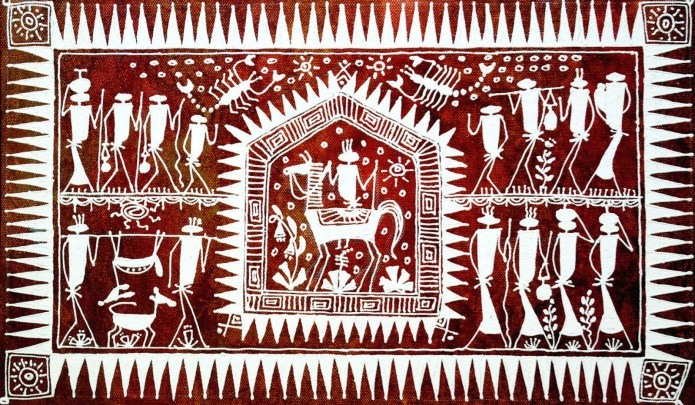
4.10. Koraput Kala Jeera Rice
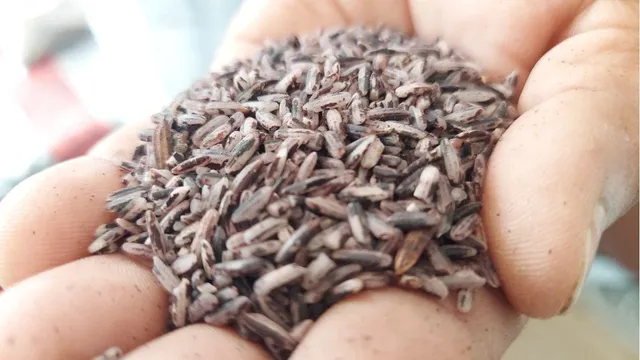
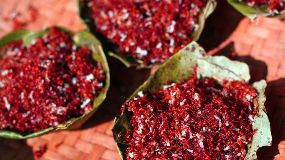
Nayagarh Kanteimundi Brinjal is known for its prickly thorns on the stems and the whole plant. The green and round fruits contain more seeds as compared to other genotypes. It is famous for its unique taste and relatively short quick cooking time. The plants are resistant to major insects and can be grown with minimal pesticide.
It is being widely cultivated in Nayagarh district of the state. The growers are getting a yield of up to 200 quintals per hectare and selling at around Rs 60 per kg. Historical records also suggest that the locals got the brinjal from the hilly areas. They collected seeds from it and started raising seedlings nearly 100 years ago
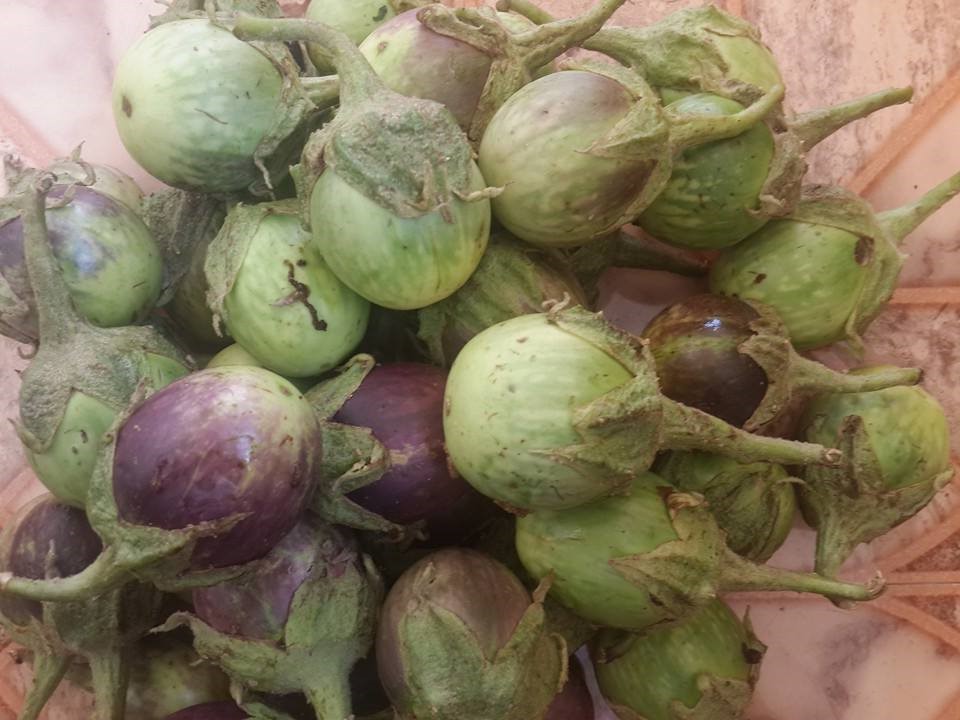
4.13.Odisha Khajuri Guda
Odisha’s “Khajuri Guda” or jaggery is a natural sweetener extracted from date palm trees and has its origin in the Gajapati district. Traditionally, the jaggery is prepared in a trapezoidal form called ‘Patali Gur’ and is organic by nature. It is dark brown and has a unique taste

4.14.Dhenkanal Magji
Dhenkanal Magji is a type of sweet made from cheese from buffalo milk, with distinct characteristics in terms of appearance, taste, flavour, shape, and size. It also has unique nutritional values that distinguish it from other cheese-based sweets.
Thousands of people were said to be earning their livelihood through animal husbandry, especially buffalo rearing, during the British era. The region was the hinterland of buffalo milk production and cheese was the third largest produce, after milk and curd. Mandar-Sadangi area of Gondia block is believed to be the centre of origin of the sweet stuff, which has now been spread to the entire district.
The sweet is prepared by draining moisture from the cheese and then frying it, finally forming balls from the mixture
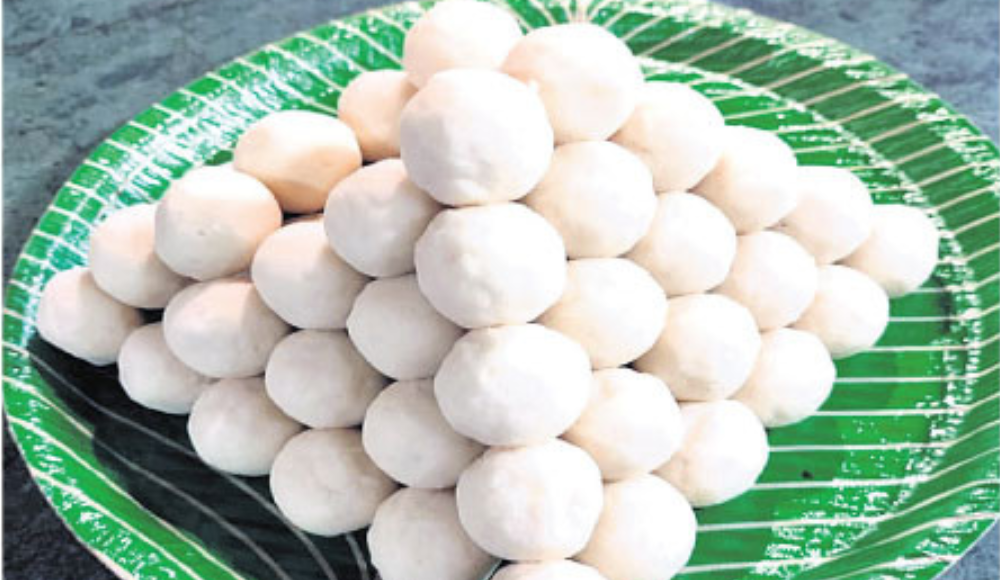
5. Way forward
A marker of authentic products, the GI tags also help protect the interests of the local growers and artisans by preventing duplicity of the products and sale from unauthorised traders. Consumers, through the tags, can know which goods are certified
|
For Prelims: Geographical Indication Tag, Uttar Pradesh, Amroha Dholak, Mahoba Gaura Patthar Hastashlip, Manipuri Tarkashi, Sambhal Horn Craft, Baghpat Home Furnishings, Barabanki Handloom Product, Kalpi Handmade Paper,
For Mains:
1. Discuss the potential economic and cultural benefits of obtaining GI tags for regional products in terms of enhancing their market value and preserving traditional knowledge. (250 Words)
|
|
Previous Year Questions 1. Which of the following has/have been accorded 'Geographical Indication' status? (UPSC 2015) 1. Banaras Brocades and Sarees
2. Rajasthani Daal-Bati-Churma
3. Tirupathi Laddu
Select the correct answer using the code given below.
A. 1 only B. 2 and 3 only C. 1 and 3 only D. 1, 2 and 3 Answer: C
2. India enacted The Geographical Indications of Goods (Registration and Protection) Act, 1999 in order to comply with the obligations to (UPSC 2018)
A. ILO B. IMF C. UNCTAD D. WTO
Answer: D
3. On the basis of 'one district one product' programme in Uttar Pradesh, which one of the following pairs is NOT correctly matched? (UPPSC Combined State Exam 2022)
A. Gautam Buddh Nagar - Readymade Garments
B. Amethi - Moonz Products
C. Agra - Leather Products
D. Baghpat - Wooden Toys
Answer: D
4. In which of the following states was the Monpa handmade paper making unit inaugurated in December 2020? (SSC CHSL 2021)
A. Manipur B. Tripura C. Assam D. Arunachal Pradesh
Answer: D
|




